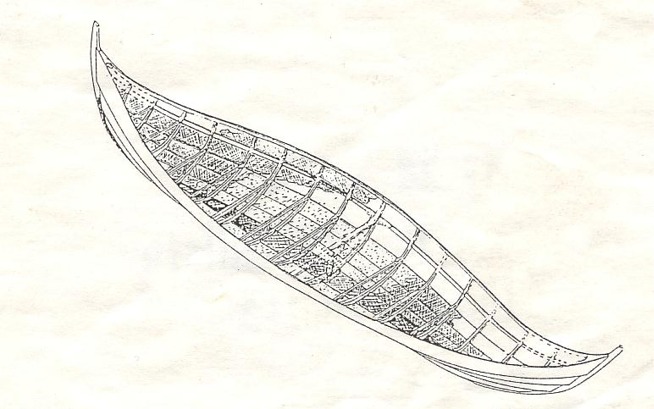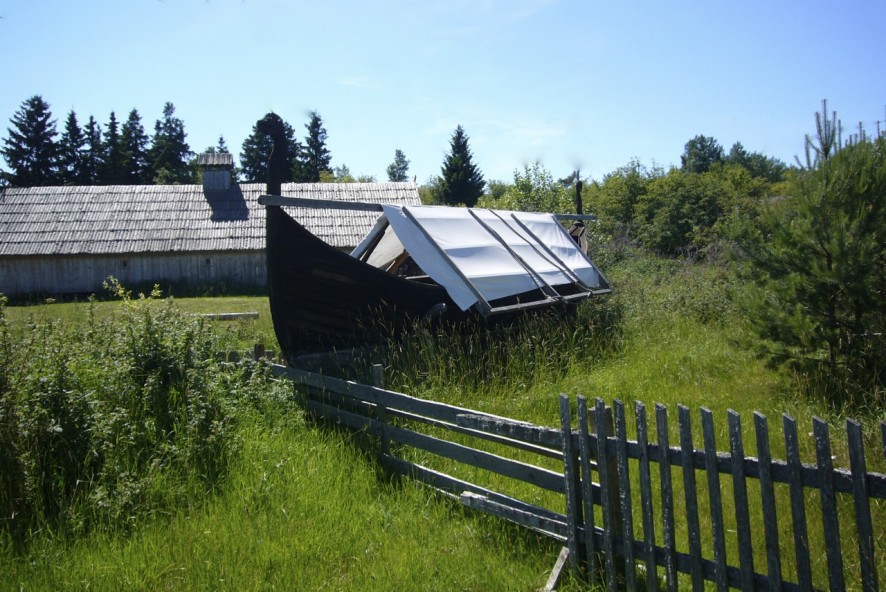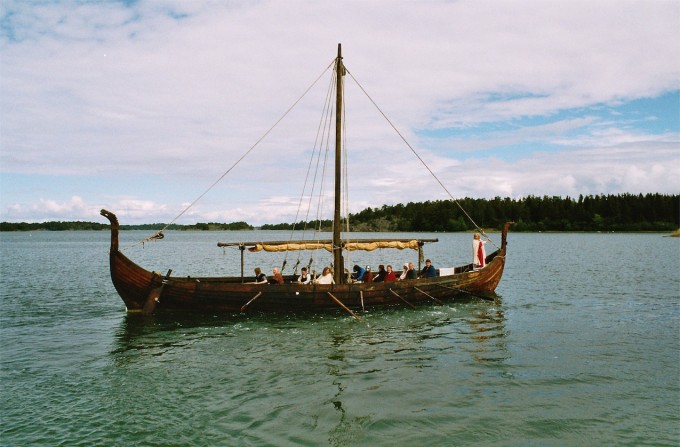Viking Ships
The Vikings handled rudders almost better than they handled plows. They were skilled shipwrights, navigators and sailors. The Viking Age began around year 800 A.D. when the peoples of Scandinavia started exploring beyond the seas to trade, but also to rob and conquer.
Because of their superiority as seamen and soldiers, the Vikings conquered land after land. Only after several hundred years did Europeans learn to successfully defend against their attacks, ending the Viking Age in the middle of the eleventh century.
The reason for the northerners’ superiority at sea was the invention of the keel. When boats were equipped with keels they could be sailed as well as rowed. Thanks to the keel, the ships could be wide and seaworthy and still have a small draught. The steering oar was located on the right side, towards the stern. To this day, the right side of a boat is called starboard because of this.
The exact heights of their ships’ masts is not known, but they probably weren’t very tall. The sails had the same shape as those of latter-day square-riggers. The advantage of a low sail and a short mast was that this arrangement placed less demand on the staying and required less ballast. The underwater hull was reinforced with crossbeams to withstand the forces of the mast and the freeboards were made taller to allow the boat to heel without taking in water.
The Vikings had different types of ships for different purposes. They had big, wide ships for trading across the seas, smaller freighters for journeys in sheltered waters, fishing boats and, of course, the long, fast, slender warships.
Several ships from the Viking Age have been found, giving a good picture of the shipbuilding art of the Vikings. The most famous are the Gokstad and Oseberg ships in Norway. In Finland, only one Viking Age wreck has been found. It is a 12 meter long ship lying on the sea floor by the island of Lapuri in the Gulf of Finland, close to the eastern border of Finland. The ship is not well preserved, but thanks to several years of research, the marine archeologist Harry Alopaeus has managed to make a realistic drawing of the ship. An exact copy of the ship, called Sotka, has been built by the organisation Viikinkiajan Laiva ry.

Even though the ships were seaworthy, they had no cabins or comforts. When at sea, everyone had to sleep on the deck, possibly under a canvas. The Vikings had good astronomical knowledge and were able to navigate to distant locations over large seas, but preferred to sail along coasts and in archipelagoes whenever possible. This meant they were able to go ashore during the night and make themselves a little more comfortable by pitching tents and making camp. The Eastern Route of the Vikings, which passed through the archipelago of Hitis in southern Kimitoön, is a good example of such a sheltered route. Sheltered routes were also convenient as it would be easy to find a harbour if surprised by a storm or fog.
The Viking ships at Rosala Viking Centre
There are two reconstructed Viking ships in Rosala: the warship Alvilda and a smaller boat called Hogland.
Hogland was constructed based on the Lapuri find mentioned earlier. The ship is 9 meters long, 2,5 meters wide and weighs about 2 tons. In the Viking village it plays the role of a Viking chieftain’s burial ship.
Burial ceremonies
When a Viking warrior died, a burial ceremony was conducted. First, his eyes and mouth were closed and his nostrils were sealed. Next, an old woman, called the angel of death, cleaned the dead man’s hands and face, combed his hair and dressed him in his best clothes.
The burial ceremonies varied from place to place. In some areas, dead persons were buried in mounds. In other places, the corpse was dismembered and brought to different parts of the country. In Russia, where many Vikings were struck down, a chieftain’s body was put on a ship which was then lit on fire by the closest relatives of the dead.
Many were buried with everything they might need in the next life including mead, food, weapons, jewelry, clothes, horses and dogs–sometimes even a peacock. Rich women were buried with their kitchen equipment and their needlework.

Alvilda is built to resemble the Norwegian Oseberg ship, one of the most famous Viking Age ship finds. The hull is built out of larch and oak, and the ship is 16,5 meters long, 4,25 meters wide and weighs about 14 tons when at sea.
A ship like Alvilda could have been used for trade as well as for warfare. It is less wide than a knarr, and its low, slender hull resembles those of the legendary longships used in warfare, which were faster and narrower than the trade ships. The longships could operate in very shallow waters and thereby get close to the beaches, allowing for quick attacks.

She is named after the legend of a shieldmaiden–a female chieftain warrior–who fought the Danes in a naval battle outside Hanko and later married the leader of the enemies.
These days, Alvilda has a place of honour in the Viking village, so you have a chance to experience it while you familiarise yourself with the other reconstructions in the area.













 Menu
Menu 


